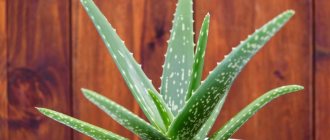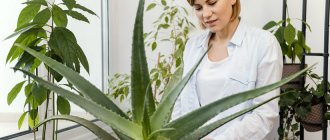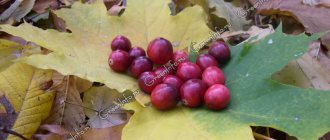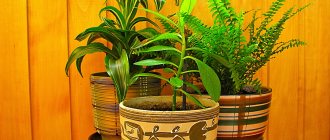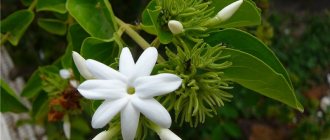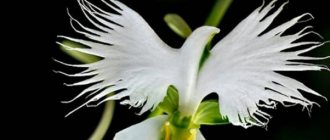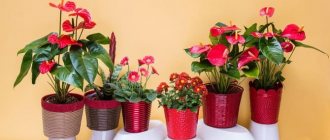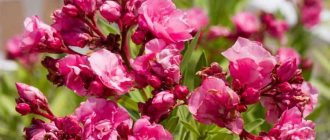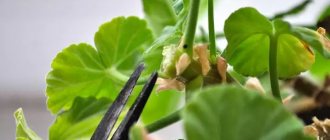While office gardening is becoming increasingly popular and an important element in creating a comfortable workspace, growing indoor plants at home remains somewhat of a taboo for many. The modern world with its pace does not leave much time for hobbies, and the fear of destroying plants haunts many who have not yet personally encountered growing them. But, believe me, even without experience and special time for basic procedures, you can achieve success and enliven the atmosphere of your home with living plants. After all, there are some indoor plants that you still have to try hard to destroy. Both beginners and anxious owners can easily cope with the most reliable types.
Criteria for choosing indoor plants for beginners
If you need to find a houseplant that a beginner will definitely not have any problems with, you need to look first for its practical characteristics, and only then for its decorative properties and your own taste.
Characteristics that you should pay attention to first:
- thermophilic and undemanding to temperature, including during wintering;
- ability to adapt to different lighting;
- drought resistance and insensitivity to interruptions in watering;
- ease of recharge;
- resistance to dry air;
- the ability to quickly recover from damage, ease of rejuvenation and formation.
There is one more little secret: problems rarely arise with plants that can be grown both in substrate and hydroponically.
It is on these principles that our top ten “problem-free” plants are formed.
Related article:
An unusual flower for the home without any problems: I fell in love with it in 2018!
How to create a flowerbed of continuous flowering?
The effect of continuous flowering can be achieved by planting annual and perennial flowers at the same time. In this case, flowering will be ensured from April-May until the first frost.
Perennial plants have a number of benefits. This is a one-time planting, easy care, easy replanting, adaptation to living conditions, frost resistance.
Among the perennial plants that take root well in the flowerbed are irises and lupine, picky Turkish carnation, lychnis, foxglove, eschscholzia, dahlias, gladioli, lilies, echinacea, cornflower, crocuses, hyacinths, astilbe, gaillardia, tulips, muscari, hazel grouse, bergenia, pushkinia, hellebores , iris, daylily, heuchera, daffodils, scilla, chionodox, fern, hosta, peony. Remember that gladioli and dahlias should be dug up for the winter, because... they are afraid of severe frosts. The remaining plants do not require replanting.
27 unpretentious flowers for floriculture in the country
To make a garden plot beautiful, beginning gardeners invest a lot of effort, money and time into creating original flower beds. Most people dream of decorating their summer cottage with unpretentious plant species that are not demanding on watering, care, and climate, but not everyone succeeds the first time. You can choose the right flowers by studying floriculture at your dacha, taking into account the location of the site and the seasonal decorativeness of the desired flower garden.
Among the bulbous plants, the most loved by gardeners are:
- Iridodictiums;
- muscari;
- daffodils;
- botanical tulips;
- Chionodoxa;
- Colchicum;
- crocuses;
- Pushkinia
More experienced flower growers advise planting garden flower beds with beautiful flowering perennials, including:
- aquilegia;
- astilbe.
By choosing flowers of different colors, having different flowering periods and textures, you can create an original flower garden from the astilbes themselves. You can learn more about the nuances of planting and caring for astilbes by reading articles on the topic “Floriculture in the country for beginners.”
- loosestrife;
- periwinkle;
- meadowsweet;
- evening primrose;
- perennial cornflower;
- swimsuit;
- geranium;
- small petal;
- doronicum;
- Brunner;
- purchased;
- spurge;
- lupine;
- lungwort;
- goldenrod;
- catnip
Very loved by gardeners for their unpretentiousness, simplicity and care in growing such annual and biennial flowers as:
- forget-me-nots;
- calendula;
- viola;
- phacelia;
- linen;
- marigold;
- cornflowers;
- Turkish cloves;
- daisies;
- nasturtium.
As you can see, there are quite a lot of plants designed to create beautiful flower beds in summer cottages. The list of plants can be supplemented with more and more new types of flowers. The whole difficulty lies only in the desire to create something beautiful and unique, the effort and time put in.
Chlorophytum
Chlorophytum comosum is more relevant today than ever. From the lush rosette, amazing shoots grow in arcs with inflorescences of delicate flowers at the ends, quickly changing into small rosettes with aerial roots. Chlorophytums form real cascades. Bright green or striped, they always look fresh and cheerful.
Chlorophytums grow well in bright light and in the shade, in any room, and forgive skipping procedures. The main thing is not to overcool the plant and not forget about it forever. And the speed of growth and ease of reproduction in them is the envy of all other indoor plants.
Chlorophytum comosum
Decembrist
This plant loves a moderate amount of light, so it should be placed on windows facing east. If you place it on the south side, the flower will have to be shaded to avoid sunburn. Decembrist begins to bloom in late autumn and, unlike many other plants, needs regular watering all year round. As a rule, they begin to fertilize the flower in September and March. And in June, many gardeners cut off shoots that are growing incorrectly. After this procedure, the plant blooms more intensely.
Ficus
The huge genus of ficus allows you to choose plants according to your taste and interior. Any classic ficus is a reliable houseplant, and two varieties are especially loved for their unpretentiousness:
- Benjamin's ficus (Ficus benjamina) - bush or tree-like plants with a dense crown of thin branches and dense, shiny, ovate-lanceolate leaves with a simple or variegated color;
- rubber ficus (Ficus elastica) is a powerful vine with aerial roots and very large oval shiny leaves.
These ficus grow well in both sun and partial shade, they love warmth and standard care - fertilizing in spring and summer, watering after the top layer of soil dries and regularly wiping the leaves from dust.
Ficus benjamina
Ficus elastica
Orchid
The orchid is very sensitive to light and easily burns when exposed to direct sunlight, so the ideal place for it would be a window facing east or west. In winter, the flower needs a special lamp that will compensate for the lack of light. Otherwise, the leaves will turn yellow and the buds will not bloom. At room temperature, the plant develops normally, however, it should be protected from air conditioning, which dries out the air, and from drafts. After using the conditioner, the leaves should be sprayed with water. It is necessary to water the orchid as the top layer of soil dries out.
Dieffenbachia
Dieffenbachia is ruffled, bright and at the same time simple, it captivates with the play of cream, yellow and white with a bright green color of ovoid leaves that unfold from tubes. And luxurious new varieties that bush well and create low, attractive forms rather than stretching to the ceiling are becoming increasingly popular.
Dieffenbachias do not like the cold, but they can tolerate complete drying out of the soil and occasional overwatering. If you place them in a protected place and in good light, and occasionally add universal fertilizer when watering, there will be no problems. And pruning and re-rooting will easily return the plant to its shape.
Dieffenbachia
What plants are suitable for garden gardening?
With the arrival of spring, all flower growers, without exception, are concerned about the same question: “Which plants to choose for planting in the country?
Experienced gardeners grow well with perennial plants.
Beginning gardeners sometimes get lost among the abundance of different packets of flower seeds on store shelves. Questions often come to their minds: “Which plants to choose for planting in a country flower bed?”, “How to care for them?”, “How to create favorable conditions for the development of flowers?”
By following simple recommendations, you can easily master floriculture in your dacha.
Annual plants are good because they bloom abundantly and are planted annually, which means that if you don’t like the plant, you don’t have to plant it next year.
With perennials it's different. They take root quickly, you can’t just throw them away, they are frost-resistant and not painful. When choosing which flowers to plant, take into account the composition and quality of the soil at your summer cottage, as well as the illumination of the land. For example, if the soil at the dacha is sandy, clarkia and dimorphotheca will take root well there; if it is very moist, choose mignonette, marigolds, morning glory, and marigolds (calendula). On alkaline soil, nasturtium, gillyflower, tobacco, poppy, and petunia will delight you. These plants are also perfect for planting near borders.
If a plant does not live more than two or three years, do not be sad. So it doesn't suit you. Don't plant it anymore. It’s better to choose some other varieties that will be more comfortable on your site.
Sansevieria
Sansevieria is an unpretentious queen that looks at us from the dark corners of rooms. Sansevieria are real Spartans for both the office and the home, able to withstand anything except dampness. Luxurious stiff leaves in neat rosettes of honey , long straight sword-shaped leaves with a variegated “mother-in-law’s tongue” , similar to sculptures, thick shoots of Sansevieri and cylindrical combine durability and endurance.
Sansevieria can withstand everything: underwatering, drought, dry air, shade. They forgive mistakes in watering and lack of fertilizing. If you don’t overwater the plants and keep the leaves clean, the “pikes” will be fine.
We have a detailed article with descriptions, varieties and types of Sansevieria
Sansevieria
Aloe vera
This is one of the most famous plants, which is famous for its medicinal properties. Aloe juice helps soothe the skin after burns or eczema.
That is why it is recommended to keep this plant in your kitchen. Aloe will do double duty: bring a little greenery into the interior and act as a natural first aid kit. You can also make various nourishing cosmetic masks from the gel or add it to creams.
Rare 20,000-year-old Paleolithic blade found in China
The Home Cleaning Basket and Other Simple Time-Saving Tricks
Juicy roll made from simple ingredients: potatoes, cheese and ham
Dracaena
Dracaena is the queen of indoor palms, but in reality it is just a pseudopalm. And the appearance with a bunch of delicate thin leaves above a lignified trunk is so palm-shaped that few people care about the nuances of classification. At first compact, dracaenas gradually rise and become bare below. There are varieties with thinner or wider leaves, plain or with stripes and valances, and all dracaenas look exquisite.
Dracaenas grow well in a light shaded place and require warmth and ventilation. If you avoid overfilling, there shouldn't be any problems. Even if the dracaena stretches to the ceiling and loses its decorative effect, it can be easily re-rooted or trimmed.
Dracaena: types, cultivation features
Dracaena
Fatsia japonica
If you have rooms in your home with insufficient natural light, then Fatsia japonica will be your best friend. It tolerates shade very well and does well on western or northern windows. The flower has very large leaves, shaped like horse chestnut leaves. Fatsia japonica also does not require special care. It is enough to water it well, avoiding water stagnation. If the air in the room is dry, then fatsia will moisten it. Good for bedrooms.
Haworthia
Haworthia is one of the most fashionable plants for arranging florariums and succulent compositions. This indoor plant is equally decorative and unpretentious. Rosettes of fleshy, pointed leaves with jagged edges and light growths look miniature and neat. And the ability to grow in colonies only emphasizes the beauty of this modest, but very rich variety and variety of plant.
Haworthias love bright light and only dislike one thing - waterlogging. They are able to withstand any drought. If you adhere to the rule of minimal watering and do not overdo it with fertilizing, Haworthia will become one of your favorite indoor crops.
Haworthia
Crassula
The money tree or crassula is also a succulent and has the ability to accumulate liquid. Because of this, the plant does not need frequent watering, and excessive soil moisture can cause root rot. Therefore, the fat plant needs to be watered as the soil dries out. The most important thing is not to overdo it. For good growth, the plant must be provided with a lot of light, but at the same time protected from direct sunlight. It is better to keep it in a semi-shaded place. In the summer, the fat plant can be additionally washed under a warm shower without flooding the earthen lump.
cacti
cactus (Cactus) is suitable for the title of a plant that will be content with minimal care from large prickly pears to cereus and mammillaria, with the exception of flowering species. Armed with huge spines or spines - miniature, thick, long, straight or hooked - cacti offer a huge selection. The actual root plants with varying degrees of pubescence can also be grafted. The shape of the stem is from round to cylindrical or oval. Ability to develop - in colonies or single plants. Cacti can even have different colors, often artificial and bright.
To avoid problems with cacti, it is worth remembering only one thing: excess water should not be allowed. Water them with a really minimal amount of water no more than once a week. They need special soil and fertilizers for succulents.
Cacti (Cactus)
Anthurium (male happiness)
In contrast to spathiphyllum, anthurium is called male happiness, or a flamingo flower. The shape of the flower resembles that of spathiphyllum, but it is a completely different plant, from a different family - the araceae. Of the above plants, anthurium is the most capricious, probably like men. It requires high humidity, high temperature, and bright, diffused light. Anthurium does not tolerate waterlogging.
Transplantation is done once every 2-3 years. The plant has a delicate root system. In this regard, under no circumstances should you remove soil from a clod of earth. The lump is completely transferred to a new pot. The pot itself should be 1-2 cm larger in diameter and height.
The soil should be loose, contain sphagnum, peat, and turf. In winter, anthurium needs a period of rest - reduced watering and lower temperature (not higher than 16ºC).
Anthurium, unfortunately, is susceptible to various fungal diseases and other pests. Despite all these factors of effeminacy of male happiness, very often it can be found in apartments in combination with female happiness. Anthurium feels quite well and is actively vegetating.
Lithops and other “living stones”
Miniature, more like pebbles, Lithops and Co. are unique plants. These are supersucculents in which the stone-like body is formed by two thickened leaves with a slit. After a cool winter, they are able to surprise with luxurious bright flowers. You can watch the change of “generations”, the growth of replacing pairs of leaves on a “living stone” endlessly.
Lithops and other types of “living stones” differ little from cacti. Without a cool winter, they do not bloom, and care is reduced to minimal watering and a few feedings of these indoor plants.
Lithops
Ivy
This is a beautiful climbing plant that, if it finds the right support to properly cling to, will twine around it completely. This is an evergreen flower that looks good when several specimens are arranged together.
You can combine 2-3 pots with ivy and hang them on a hill. This will help create elegant green rugs. Ivy is an excellent choice for visually dividing space. It will also fit well into the interior of the kitchen for its landscaping.
Blue or yellow: how to calculate your interior color by date of birth
Not a warehouse, but a place to relax: how to decorate a balcony on a minimal budget
An investigation by Samara local historians confirms: “Zoya’s Standing” is a legend
Homemade violets
Tiny Saintpaulias , charming neat bouquets with velvety leaves and delicate shining flowers, have become indoor classics for good reason. Fragile, fleshy, neat in everything, they surprise with their perfect beauty and variety of varieties. Growing Saintpaulias is very simple, although the approach must be special, unlike caring for other unpretentious indoor plants.
The best nutrition for violets for flowering with a cap
To avoid difficulties with Saintpaulias, it is better to water them not along the edge, but using the bottom watering method. The leaves and base of the rosette should not be splashed. Saintpaulias do not need spraying or frequent feeding with special fertilizers. If you replant the bushes every six months, as most fans of the plant prefer, then you can skip fertilizers altogether.
Saintpaulia
Pothos
This is a beautiful and hardy plant, without which no home is simply unthinkable. Because the stems of pothos droop and trail, it is best grown in a hanging basket or placed on a high shelf to enjoy its cascading effect.
In addition, pothos is known for its ability to purify the air and is durable.
Swamp Papyrus
Smikavets , Cyperus or, simply, indoor papyrus - the plant is indeed the closest relative of the main culture of ancient Egypt. Thin hollow stems are carried at the top of an umbrella-whorl of grass-like leaves to a height of up to 2 m, creating rustling fragile shrubs in miniature. Elegant, simple and very airy, Cyperus always looks bright.
For gardeners who like to overwater indoor plants, this is a real find. Cyperus requires one thing - protection from drying out of the earth. Constant “swamp” humidity is easily controlled by the weight of the pot and by touch. This plant will not suffer even without feeding! And if suddenly you are away for a long time and the papyrus turns yellow, you can completely cut it off and within a week or two new umbrellas will restore the beauty of the turf.
Cyperus
Unpretentious annual flowers
Now check out a few annuals that anyone can easily grow.
Marigolds (tagetes)
The palm for ease of cultivation undoubtedly belongs to marigolds. These orange or yellow flowers, growing in every country house, decorate flower beds from the beginning of summer until the first frost.
The height of the plants depends on the variety: there are low-growing varieties, which are often used in borders (their height does not exceed 20 cm), and vigorous ones, reaching a height of 1-1.2 m. Marigolds are grown both through seedlings and by sowing directly into the open priming. The second option is simpler, but flowering will begin later than with the seedling method.
- Instructions: growing marigold seedlings at home
Do you want a bright and sunny flowerbed in the summer? Or maybe you dream of a small garden in hanging boxes right on the balcony? Then sow marigolds!
Calendula (marigold)
Another annual that's so easy to care for that it's easier to just grow weeds is calendula. Its bright orange inflorescences will enliven any flower garden and easily lift your spirits on the cloudiest day.
The height of the plant ranges from 15 to 95 cm, the bushes can be spreading or compact. There are varieties with simple, double and semi-double flowers. In addition to the traditional orange color, varieties with pink, red, golden and other shades of inflorescences have been bred. Flowering is long-lasting: it begins in early June and lasts until frost.
However, calendula is not only decorative, but also very useful. The plant is used for medicinal purposes. It is used in the country as green manure, placed in compost pits and planted on the site to prevent fungal diseases, because the flower has bactericidal properties.
Zamioculcas
Despite the complex name, which is quite difficult to remember, the appearance of this shrub is very memorable. Long, straight stems with fleshy, dark green, glossy leaves. The plant is undemanding to lighting, air and watering. Zamioculcas can be grown on any windows - it does not mind both direct sun and shade. The flower can go without watering for a long time. If the period of “drought” is long, then zamioculcas begins to shed its leaves. As soon as they begin to water it, it begins to grow again and actively produces foliage.
The only requirement of Zamioculcas is a little sand in the soil. Ideal soil for cacti and other succulents.
Monstera
Who said that tropical vines cannot be grown in an apartment? Monstera refutes this opinion. There are several types of this plant. Most Popular:
- Monstera Adanson;
- Leaky;
- Pointed;
- Motley;
- Friedrichstahl;
- and others.
Monstera can be found in almost any hospital, library, school and other public places. The thing is that this is a very unpretentious plant. It is undemanding to light; artificial lighting is quite suitable. It is also undemanding when it comes to watering: Monstera can be watered once every two weeks. The leaves are very large and rugged. If there is little light, the leaves may become whole. Monstera is a real gift for beginners in floriculture. The only thing to be wary of is its size. It can grow up to 5 m.
It is not recommended to keep the monstera in small spaces. The fact is that it itself is moderately poisonous. But this is rather not a disadvantage, but an advantage of this tropical native. Light toxins contained in the leaves protect monstera from various types of pests.
There are a great variety of easy-to-care plants: large and small, flowering and decorative foliage. Unpretentiousness does not mean that you don’t have to care for the flower. Even weeds grow where there is care. Remember that plants, like animals, have feelings - this is a scientifically proven fact. Love your indoor flowers, and they will love you back.
